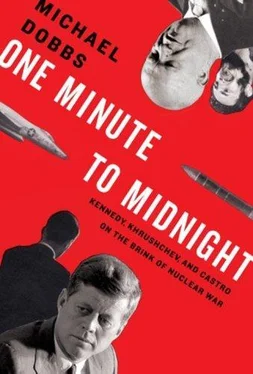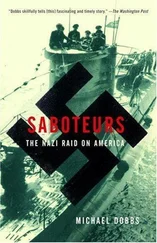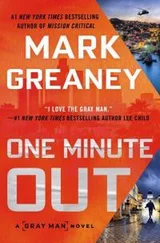He was standing on a makeshift podium—a large mound of dirt, more than three feet high. Not just any dirt, but dirt that had been transported in sacks halfway around the globe from Russia as a reminder of the rodina— the “motherland.” For extra effect, the Komsomol secretary had found a long wooden pole, painted it red and white to resemble a frontier post, and placed it in front of the presidium. A sign hanging from the pole read: TERRITORY OF THE USSR.
WE WILL DEFEND CUBA AS OUR MOTHERLAND , proclaimed a nearby banner.
Several hundred officers and men had gathered in a field in front of the podium. Although they were standing in orderly ranks, their appearance could scarcely have been less military. They were wearing a strange assortment of clothes: checkered shirts, military trousers cut above the knees, heavy Russian boots with the tops sliced off and holes for ventilation in the tropical heat. Some soldiers were bare to the waist, others looked “like scarecrows,” in Malakhov’s opinion.
He had called the meeting to mark a special occasion: the 79th regiment had just become the first Soviet missile unit in Cuba to declare itself “combat-ready.” Its eight missile launchers were in place, next to heavy concrete launching pads, all oriented northward, toward the imperialist enemy. Parked nearby, on canvas-covered trailers, were the R-12 rockets, thin and long like giant pencils. Fuel trucks and oxidizer vehicles were in position. The warheads themselves had still not arrived on site but they could be brought here in less than a day.
“We have completed the assignments of the first stage,” said Malakhov, launching into his pep talk. “The Soviet soldier always remains true to his military oath. We may die a heroic death, but we won’t abandon the people of Cuba to tortures and suffering at the hands of the imperialists.”
Applause, whistles, and a volley of celebratory machine-gun fire greeted the Komsomol leader.
“Rodina ili smert. Patria o muerte.” (“Motherland or death.”)
“Venceremos.”
The officers and soldiers of the 79th missile regiment might look like scarecrows, but they had accomplished an extraordinary logistical feat. Never before had a Russian army ventured this far from the rodina, let alone an army equipped with weapons capable of wiping out tens of millions of people. What is more, they had done it largely in secret. The first Soviet missiles had arrived in Cuba in early September, but were not discovered by U.S. spy planes until more than a month later. And even now, there was much that Washington did not know about the enemy force that had arrived, unannounced, in its own backyard.
It had taken them nearly three months to become combat-ready. The regimental commander, Colonel Ivan Sidorov, had been given a special “government assignment” at the end of July. Much of August was spent packing the paraphernalia of a mobile missile unit: rockets, trucks, bulldozers, cranes, prefabricated huts, some 11,000 tons of equipment in all. The regiment needed nineteen special trains to reach the Crimean port city of Sevastopol from its base in western Russia. In Sevastopol, the regiment transferred to five cargo ships and a passenger liner.
All this was part of a much larger armada. To transport fifty thousand men and 230,000 tons of supplies across the ocean, Soviet military planners had organized a fleet of eighty-five ships, many of which made two or even three trips to Cuba. There were five missile regiments in all, three equipped with medium-range R-12s and two with intermediate-range R-14s. Other forces deployed to Cuba included four motor rifle regiments to guard the missiles, three cruise missile regiments, a regiment of MiG-21 fighter jets, forty-eight light attack Ilyushin-28 bombers, a helicopter regiment, a missile patrol boat brigade, a submarine squadron, and two antiaircraft divisions.
Like everybody else, Sidorov’s men had no idea where or why they were being deployed. To confuse the enemy, the mission had been code-named Operation Anadyr after a city on the eastern tip of Siberia. Skis and heavy felt boots known as valenki were loaded onto the transport ships to fool any American spy loitering dockside into thinking the fleet was headed toward the freezing North. Communication with families was forbidden. “The motherland will not forget you,” a representative of the Soviet General Staff told the troops as they set sail.
The first ship to depart was the 10,825-ton Omsk, on August 25. The Japanese-built freighter normally carried timber and had hatches large enough to accommodate missiles. The sixty-seven-foot-long R-12 rockets had to be stored in a diagonal position, propped up against a wall. Space was so limited that only Sidorov and his senior officers slept in cabins. Ordinary soldiers were crammed into the ’tween deck space beneath the bridge, normally used for storage. In all, 264 men had to share four thousand square feet of living space, just sixteen square feet per person, barely enough to lie down.
Instructions on the route to follow were contained in a series of sealed envelopes, to be opened jointly by the commander of the regiment, the ship captain, and the senior KGB representative. The first set of instructions ordered them to “proceed to the Bosphorus” the second “to proceed to Gibraltar.” It was only after the Omsk had passed through the Mediterranean and entered the Atlantic that they opened the third set of instructions, which ordered them to “proceed to Cuba.”
The atmosphere below decks was stifling. The sun beat down on the heavy metal hatches, pushing the temperature to over 120 degrees at times. Humidity reached 95 percent. The hatches were kept closed whenever foreign ships were around or they were close to land, as in the Bosphorus or the Straits of Gibraltar. Small groups of soldiers were permitted on deck at night to breathe the fresh air, an eagerly awaited privilege. Entertainment consisted of endless reruns of Quiet Flows the Don, the latest Soviet blockbuster.
Seasickness was a terrible problem. The ship rode high in the water due to the relatively light weight of the missiles and was tossed about on the waves when she ran into a severe storm in the middle of the Atlantic. Military statisticians later estimated that three out of every four passengers got seriously seasick. The average soldier lost twenty-two pounds in weight during the voyage. Thirty percent of the personnel were unable to do physical labor for a day or two after their arrival, and four percent were incapacitated for more than a week.
As the Omsk approached Cuba, U.S. Air Force planes began circling overhead, photographing the deck cargo. One night, Sidorov was woken by a powerful searchlight shining into his cabin. He hurried to the bridge, where he saw an American warship close on the starboard side. At dawn on September 9, as the freighter passed by the Guantanamo Naval Base, patrol boats came out to inspect her. A pair of jet fighters screamed overhead. It would take Washington many weeks to figure out what the Omsk was carrying. Relying on intercepted Soviet messages, the National Security Agency had concluded on August 31 that the cargo consisted of “barreled gas oil.”
The rest of Sidorov’s regiment followed three weeks later on a passenger liner, the Admiral Nakhimov. More than two thousand soldiers—described by the Soviet press as “agricultural workers and students”—crammed into a vessel built to carry nine hundred tourists. When the ship docked in Havana, the first thing the sick and exhausted soldiers noticed was smoke rising from a bonfire on land. A Soviet motorized rifle regiment was burning its unneeded ski equipment.
The scale of the Soviet deployment went far beyond the CIA’s worst fears. Briefing the president on the afternoon of Saturday, October 20, McNamara estimated Soviet troop strength on Cuba at “six thousand to eight thousand.” CIA analysts arrived at the figure by observing the number of Soviet ships crossing the Atlantic, and figuring out the available deck space. There was one missing element in these calculations: the ability of the Russian soldier to put up with conditions American soldiers would never tolerate.
Читать дальше












